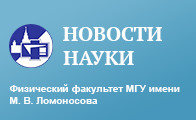Рассмотрено состояние действующих $π$-мезонных фабрик и перспектива их развития. Обсуждаются проекты К-мезонных и нейтронных фабрик. На основе численного моделирования динамики движения протонов по полным уравнениям на электронно-вычислительной машине установлено медленное прохождение в кольцевом изохронном циклотроне целого резонанса по радиальным бетатронным колебаниям $Q_{R}=2(~845)$ МэВ с последующим ускорением до $Q_{R}=263(~1200)$ МэВ. Обнаружено неизвестное ранее явление сильного послерезонансного (по сравнению с известным адиабатическим) затухания с ростом радиуса орбиты амплитуд свободных радиальных колебаний заряженных частиц, возмущенных при прохождении целого резонанса, обусловленное уходом частоты радиальных колебаний от резонанса в магнитном поле с пространственной вариацией. Приведены параметры кольцевого циклотрона на энергию протонов $\sim $4,2 ГэВ - генератора каонов и нейтронов.
Московский государственный университет имени М.В. Ломоносова, физический факультет, НИИЯФ. Россия, 119991, Москва, Ленинские горы, д. 1, стр. 2



